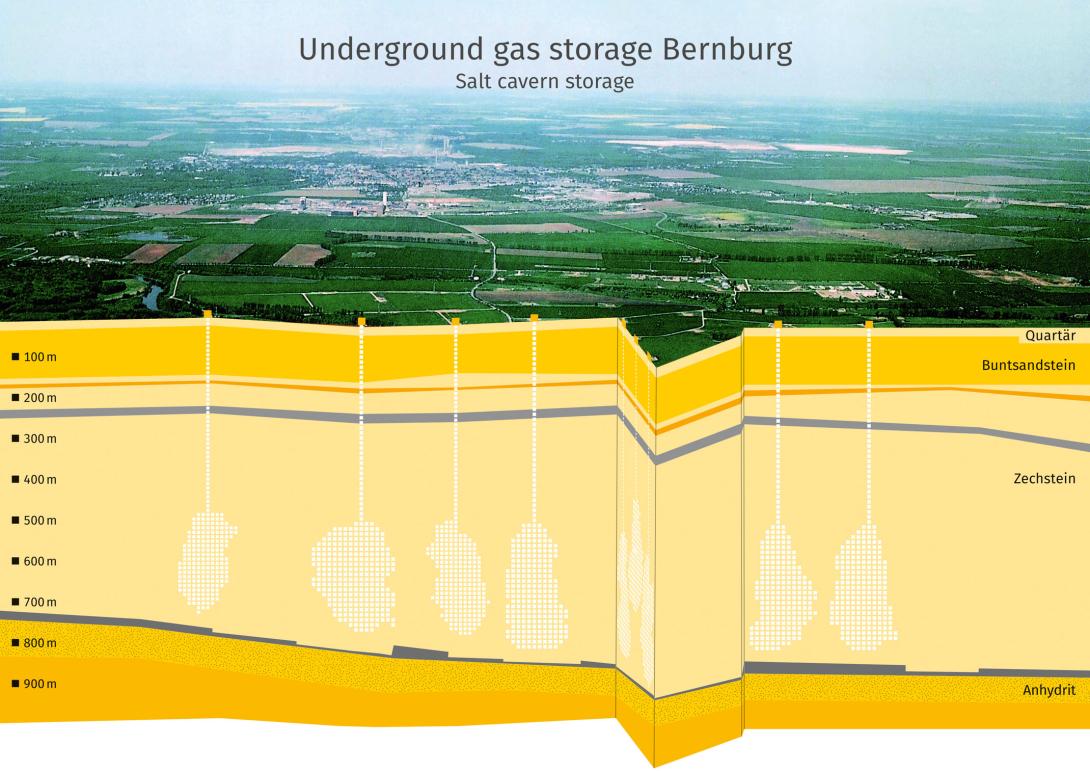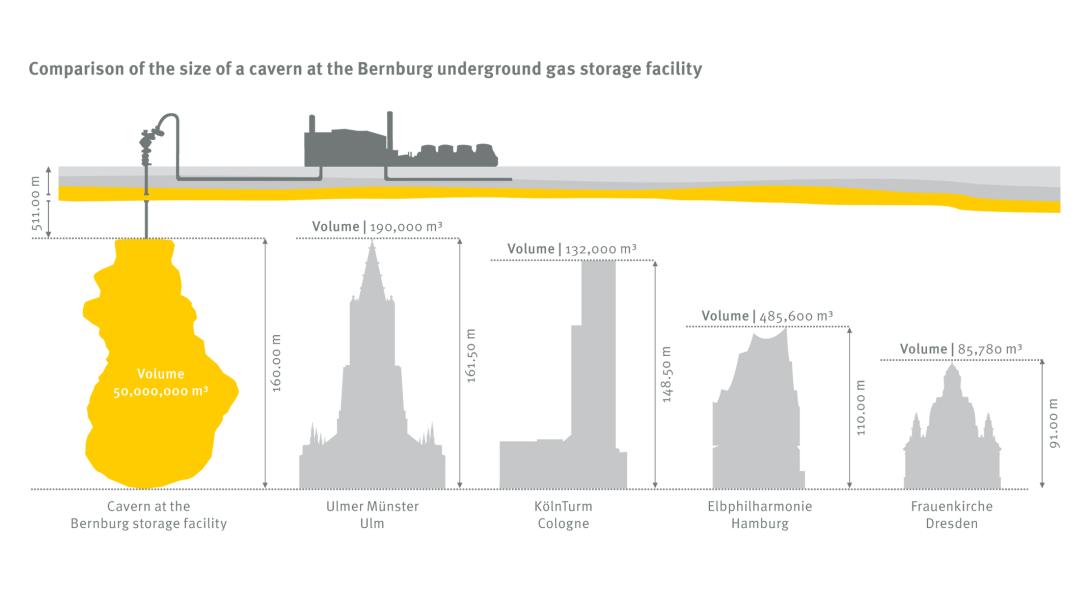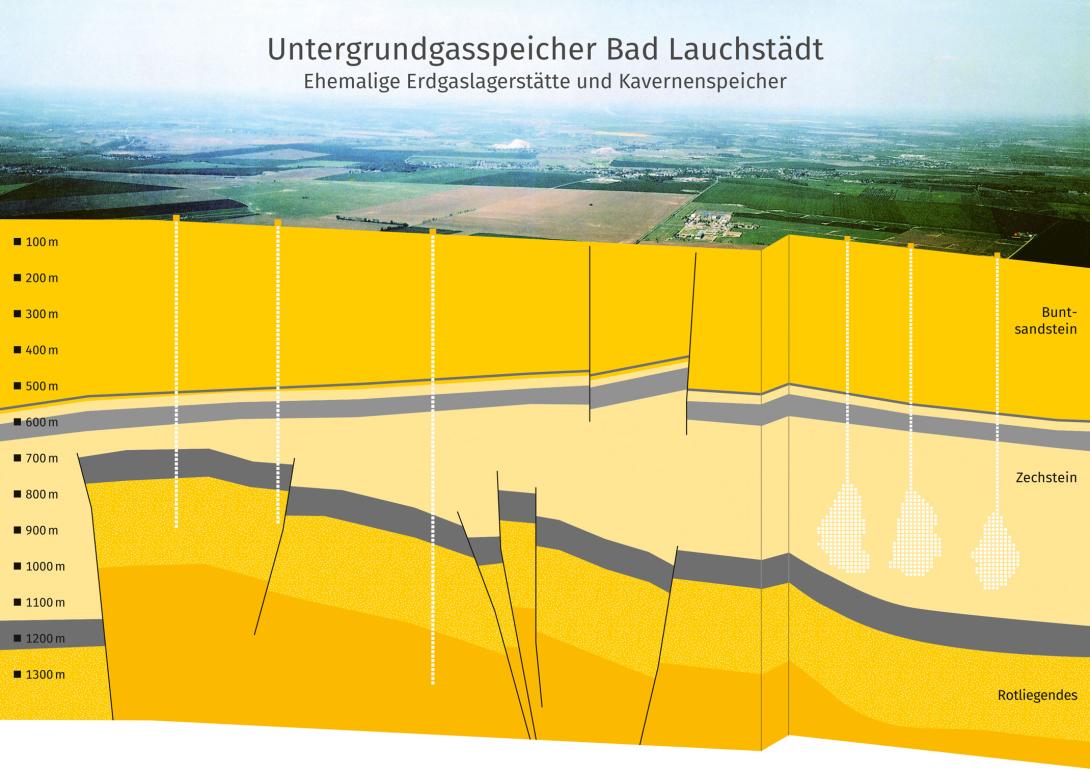Why Store Natural Gas?
The situation is clear: Germany does not possess much in the way of natural gas reserves meaning that 80 percent of the gas needed must be imported. Despite seasonal variations in demand, energy providers must supply gas to consumers throughout the entire year. It is therefore important that we have a flexible buffer in order to guarantee reliable supplies at all times – this means we need storage facilities where we can place gas temporarily and use it flexibly as necessary. As the country's third largest storage system operator, we provide capacity for about 2.3 billion cubic meters of natural gas at four natural gas storage facilities within Germany. This huge volume of natural gas would be enough to guarantee supplies to one million homes – for an entire year.
Holding it All Together: Types of Storage Facilities.
Underground gas storage (UGS) occurs in natural or artificial reservoirs below the earth's surface – either in porous or cavity storage facilities. Porous storage includes "depleted reservoirs " and "aquifers" while cavity storage refers to underground caverns. We use both caverns and depleted reservoir storage facilities at our four locations in central and northern Germany.
Flexible: Cavern Storage.
Our cavern storage facilities are manmade, hollow spaces which have been created in underground salt deposits. We drill into the deposits, dissolve the salt present using water and transport it above ground. What remains is a cylindrical cavity with a diameter of up to 100 meters and a height between 50 and 500 meters. These caverns are located hundreds of meters below the earth's surface – in Germany as deep as 2.5 km below the surface. The thickness of the salt domes and their properties guarantee the caverns' natural impermeability making additional linings, such as those needed in stone caverns created by other types of mining, unnecessary.


During storage, the natural gas is injected in a densely compressed form in order to fully utilize the caverns' volume and to make quick withdrawal possible if necessary. The pressures involved can reach more than 60 times that which is found in a normal car tire. High performance gas-powered or electric compressors are used to create these enormously high levels of pressure. Cavern storage is very flexible: large volumes of natural gas can be transferred to or from the connected transport networks quickly. Accordingly, we use this type of storage to cover sudden fluctuations in demand from our customers.
Our Cavern Storages
Consistent: Depleted Reservoir Storage.
Depleted reservoir storage is a type of porous facility. Millions of years ago, gas collected naturally in the pores and spaces between layers of chalk and sandstone. After naturally occurring deposits have been depleted, the fields are converted for use as nat gas storage facilities. The existing porous stone absorbs injected gas like a sponge. The upper wall is sealed by a dense layer of stone ensuring that no natural gas is able to escape.

The amount of flexibility at depleted reservoir storage facilities lies between that of aquifer and cavern locations. As opposed to aquifer reservoirs, they do not have fixed injection and withdrawal rates. However, as opposed to cavern storage facilities, they do require a strict 2 week period of downtime twice per year during which gas may neither be injected nor withdrawn. Natural gas stored in depleted reservoirs is stored more spaciously as in caverns meaning that the pressure therein is much lower and gas stored here may not be withdrawn as quickly. They are, therefore, best suited for balancing expected, seasonal fluctuations in demand.